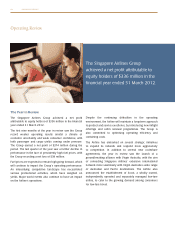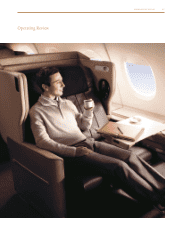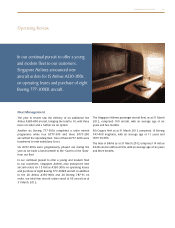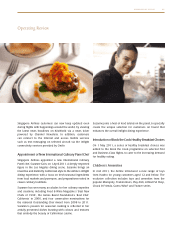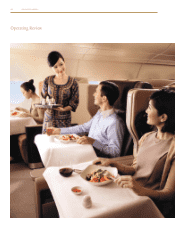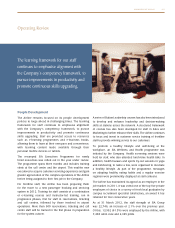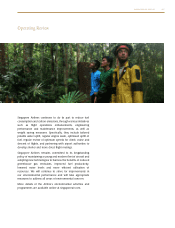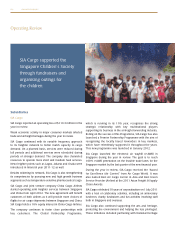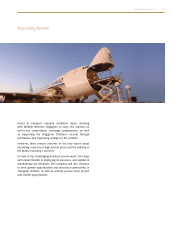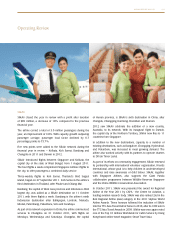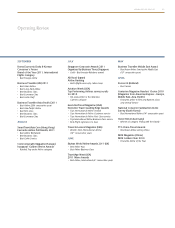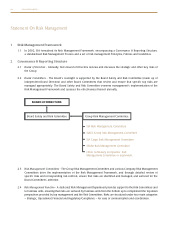Singapore Airlines 2012 Annual Report Download - page 28
Download and view the complete annual report
Please find page 28 of the 2012 Singapore Airlines annual report below. You can navigate through the pages in the report by either clicking on the pages listed below, or by using the keyword search tool below to find specific information within the annual report.
026 SINGAPORE AIRLINES
Environment
The environment is one of the aviation industry’s key
priorities, along with safety and security. Airlines are working
constantly to limit their climate change impact, emissions
and noise.
Over the past 40 years, the industry has improved fuel
efficiency by 70%. Between 2001 and 2008, fuel efficiency
improved by 16%. Going forward, the industry aims to
achieve carbon neutral growth by 2020 on the way to
a carbon-free industry. The International Air Transport
Association (IATA) has adopted a strategy to reduce emissions
based on the four-pillar strategy of investing in technology,
improving operational efficiency, building and using efficient
infrastructure, and using positive economic instruments to
provide incentives.
With advances in technology, aircraft emissions around
airports have been significantly reduced. Since the 1960s,
levels of carbon monoxide have come down by 50% and
unburned hydrocarbons and smoke by around 90%.
Research is targeting a further 80% reduction in nitrogen
oxide emissions by 2020. The industry is also making
substantial investments in cleaner ground support equipment
and vehicles to improve local air quality.
Today’s aircraft are 50% quieter than 10 years ago. The
current noise certification standard -- Chapter 4 -- introduced
on 1 January 2006 for new aircraft designs is more stringent
than the Chapter 3 standard. Aircraft certified to Chapter 4 are
at least one third quieter than those certified to the Chapter
3 standard.
Besides revolutionary changes in aircraft and engine design,
and the use of lightweight composite materials, alternative
fuels -- sustainable biofuels in particular -- have been
identified as having potential to reduce the carbon footprint
of the air transport industry. The challenge remains with
the availability of commercially viable biofuels as well as
supporting infrastructure. Singapore Airlines is committed
to working with key stakeholders on exploring the use of
biofuels for aviation, and joined the Sustainable Aviation Fuel
Users Group in September 2011.
Despite significant strides made by the aviation industry in
improving its environmental impact, the European Union
Emissions Trading Scheme has been applied to international
aviation since the beginning of 2012. Emissions from
aviation are capped at 97% of average annual emissions in
the reference period from 2004 to 2006, and the target will
be tightened to 95% from 2013. Singapore Airlines supports
IATA’s position that any emissions trading schemes applied
to aviation must incorporate a number of fundamental
elements, including preserving the International Civil Aviation
Organization’s global leadership, minimising competitive
distortions and having open access to trading markets.
Operating Review
Singapore Airlines is committed to
working with key stakeholders on
exploring the use of biofuels for aviation,
and joined the Sustainable Aviation Fuel
Users Group in September 2011.


